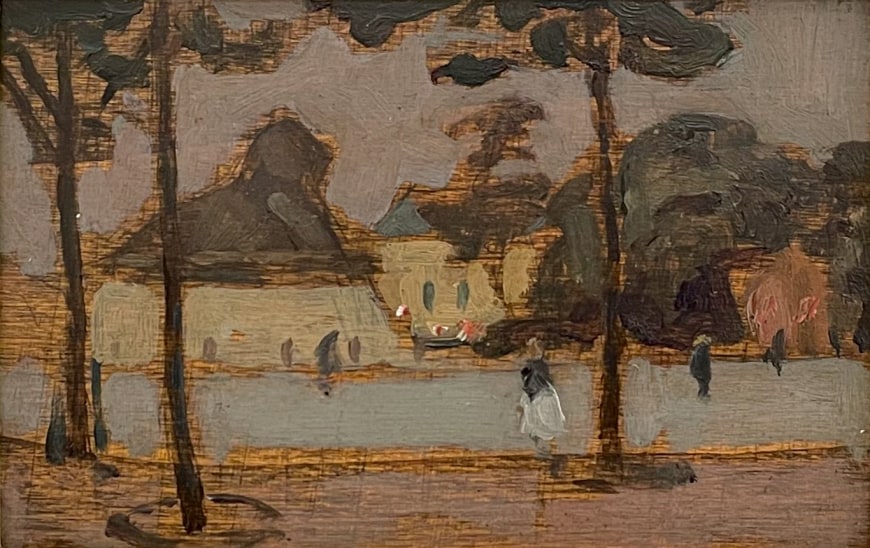-
Artworks
James Wilson Morrice1865-1924Le Lion de Belfort, Paris, 1892-1894 (circa)inscribed, ‘2’ (verso, left border) and ‘No 2’ (verso, right border, on the side) and titled, 'Place Belfort / Paris' (verso, bottom centre); studio stamp, 'STUDIO J.W. MORRICE' (verso, middle).Oil on wood3 3/4 x 6 1/8 in
9.7 x 15.5 cm1of 2





